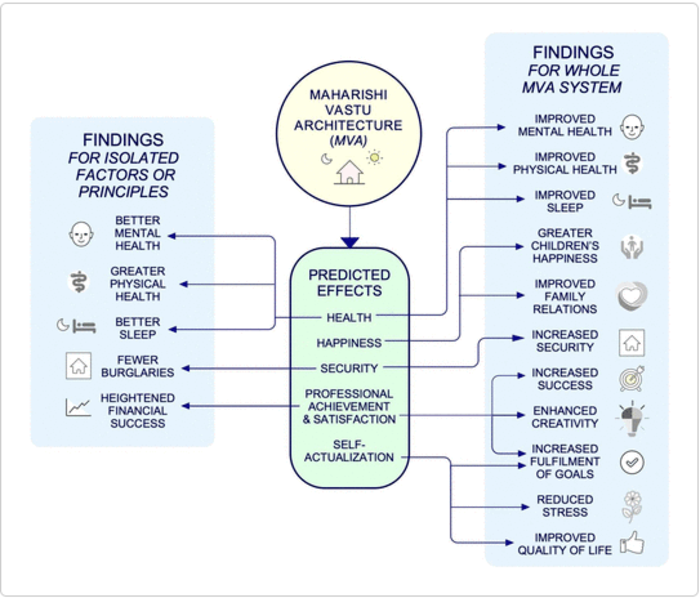Having understood the ill-effects if sick building syndrome and the need to better conserve energy by incorporating green features, architects are also utilizing certain elements of an architectural design system shown to reduce stress, improve sleep, promote physical and mental health, thereby improving the quality of life for its inhabitants.

Credit: Maharishi International University
Having understood the ill-effects if sick building syndrome and the need to better conserve energy by incorporating green features, architects are also utilizing certain elements of an architectural design system shown to reduce stress, improve sleep, promote physical and mental health, thereby improving the quality of life for its inhabitants.
These findings appear in the first comprehensive review of 40 years of published studies on the benefits of Maharishi Vastu® architecture (MVA) published in the current issue of Global Advances in Health and Medicine: Managing the Built Environment for Health Promotion and Disease Prevention with Maharishi Vastu Architecture: A Review. Authors: Jon Lipman, AIA; Lee Fergusson, PhD; Anna Bonshek, PhD; Robert H. Schneider, MD, FACC. Access the Figures and Tables in the paper online.
MVA is a holistic wellness architectural system that aligns buildings with nature’s intelligence, creating balanced, orderly, and integrated living environments with the goal of improving occupants’ lives in several areas.
“We were surprised to find that something so ancient has so much to tell us about how buildings can improve our health and productivity,” said Jon Lipman, AIA, lead author and director of the Institute for Vedic Architecture at Maharishi International University.
Some of the key findings of the review include:
- Sleeping with one’s head to the east or south is associated with positive health outcomes, such as lower heart rate, blood pressure, and serum cholesterol levels.
- Homes with south entrances are associated with poorer mental health and more financial problems.
- Facing east while working is associated with greater brain coherence and faster task completion.
- Occupants of Maharishi Vastu architecture homes or office buildings show higher creativity and report improved health and quality of life.
Previous research on the impact of buildings focused primarily on assessing stress reduction and increasing comfort and well-being. The findings of this review reinforce the growing recognition that building design plays a key role in both causing and even potentially solving humanity’s health challenges.
“Modern medicine now recognizes the powerful effects of the ‘envirome‘ on health,” said study co-author, Robert Schneider, MD, FACC, and Dean of the College of Integrative Medicine at Maharishi International University.
“The envirome,” he explained, “includes all the natural and man-made elements of our environment throughout the lifespan, notably the built environment. This review of the science suggests that buildings constructed according to principles of Maharishi Vastu architecture function as positive elements in the envirome to enhance mental and physical health and well-being. Further advances in neuroscience offer plausible physiological explanations for these effects.”
Maharishi Vastu architecture is the recent revival of an ancient architectural system from South Asia. Maharishi Mahesh Yogi, the founder of the Transcendental Meditation organization, systematically integrated over 20 principles into a uniquely comprehensive building system.
Some of the principles included in this system are:
- The building’s main entrance is oriented to the east or north.
- The building’s walls align with the cardinal directions.
- The floor plan assigns key functions to specific locations within the building.
- The floor plan enables occupants to face the most ideal directions during work and sleep.
- The architectural plans must adhere to consistent and precise guidelines.
- In keeping with the idea of providing a healthy environment, the system emphasizes non-toxic, natural materials, increased fresh air, and reduced electromagnetic radiation.
The results of the review suggests that Maharishi Vastu architecture offers a viable approach for using architectural design as a tool for promoting mental and physical health.
Journal
Global Advances in Health and Medicine
DOI
10.1177/2164957X221077084
Method of Research
Literature review
Subject of Research
Not applicable
Article Title
Managing the Built Environment for Health Promotion and Disease Prevention With Maharishi Vastu Architecture: A Review
Article Publication Date
27-Apr-2022



